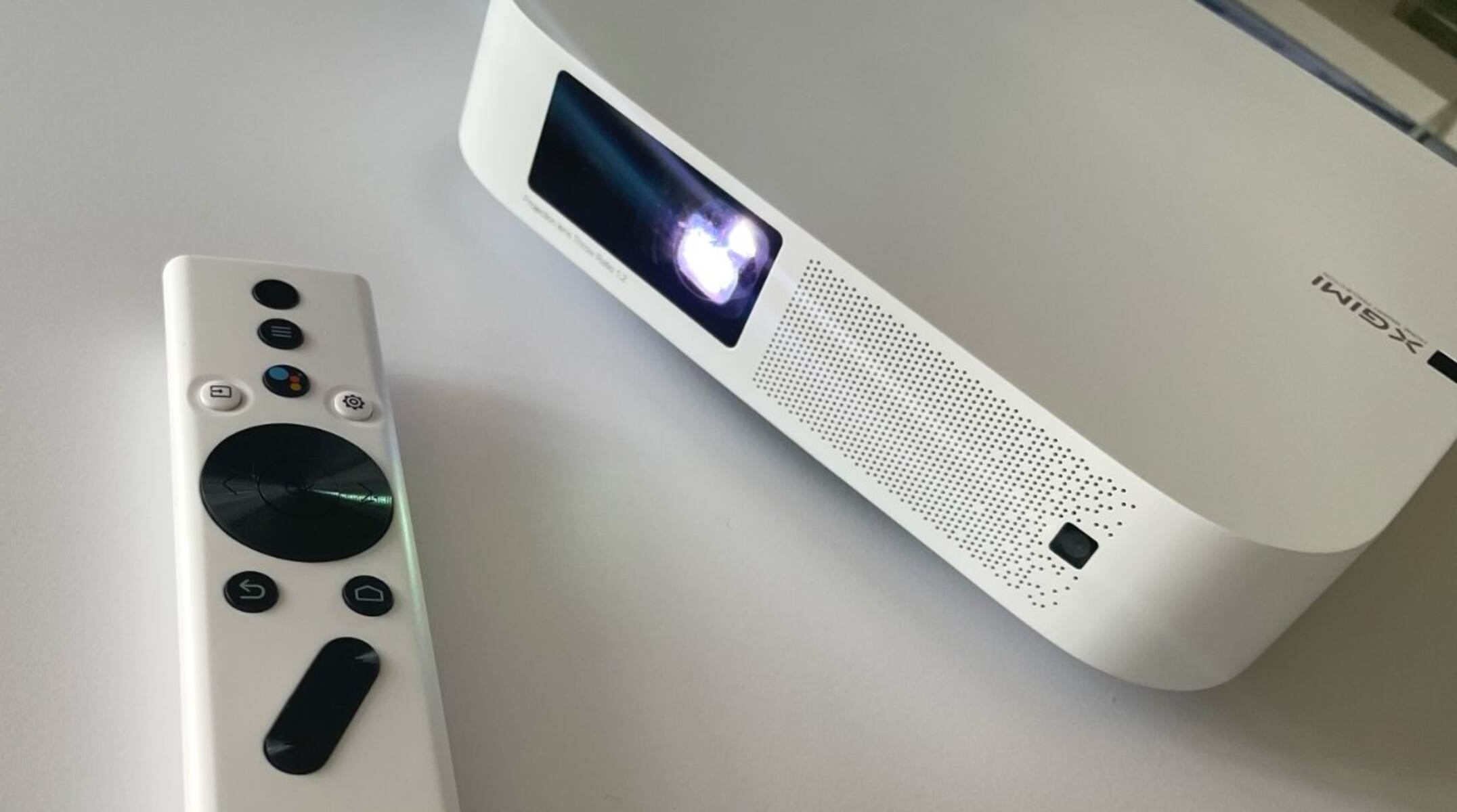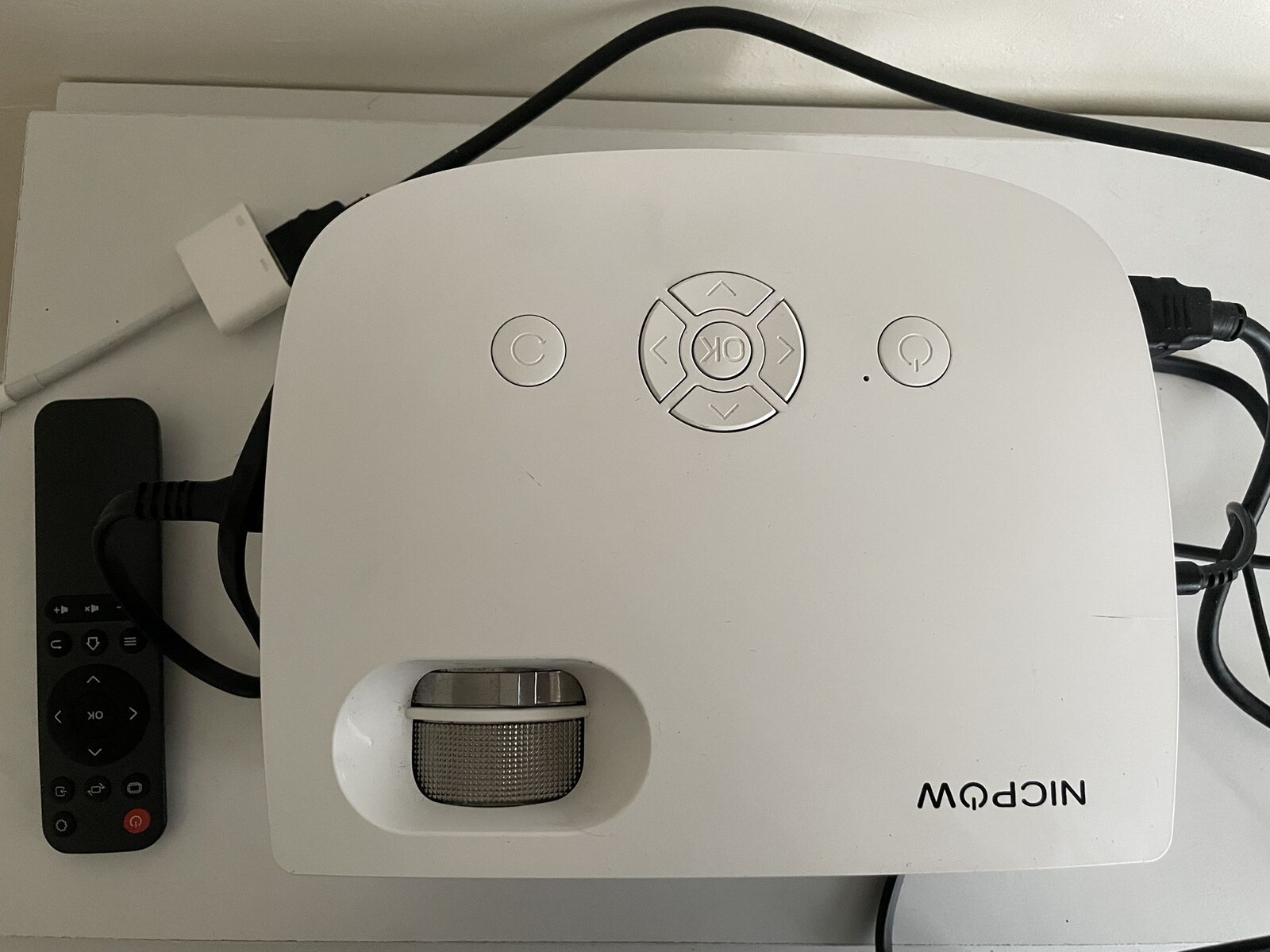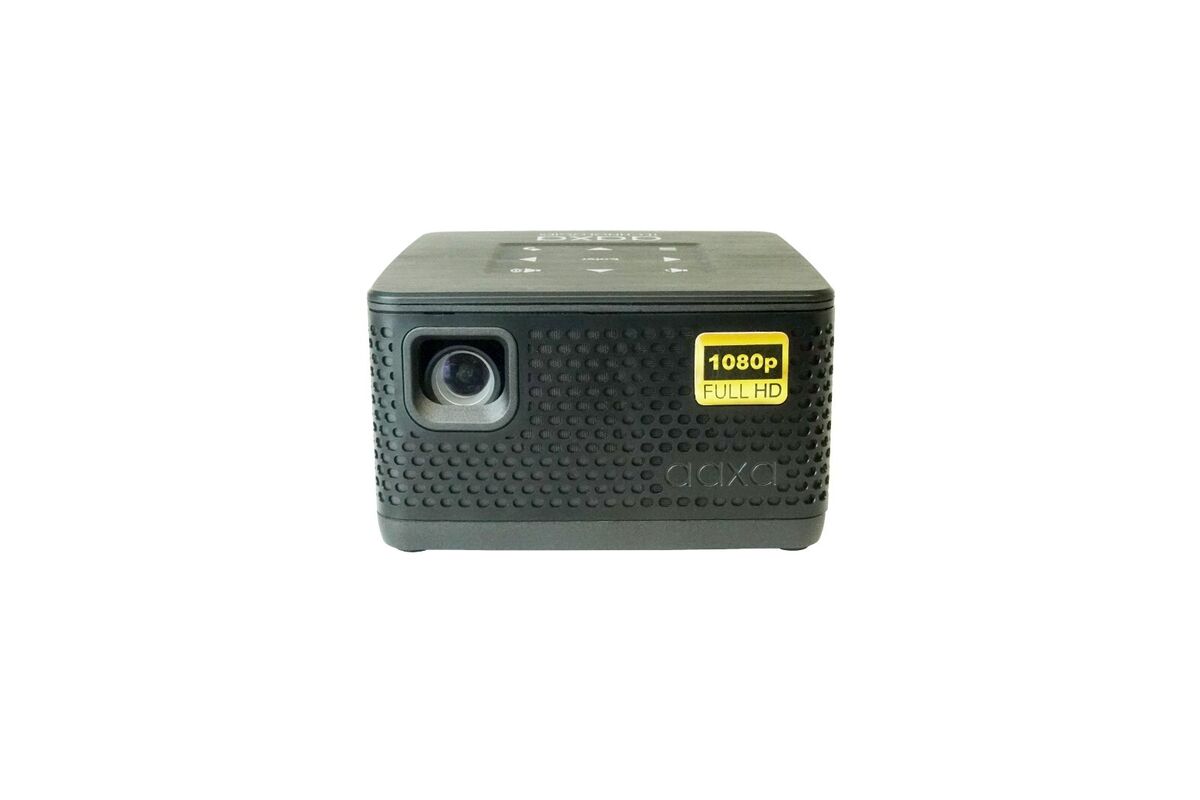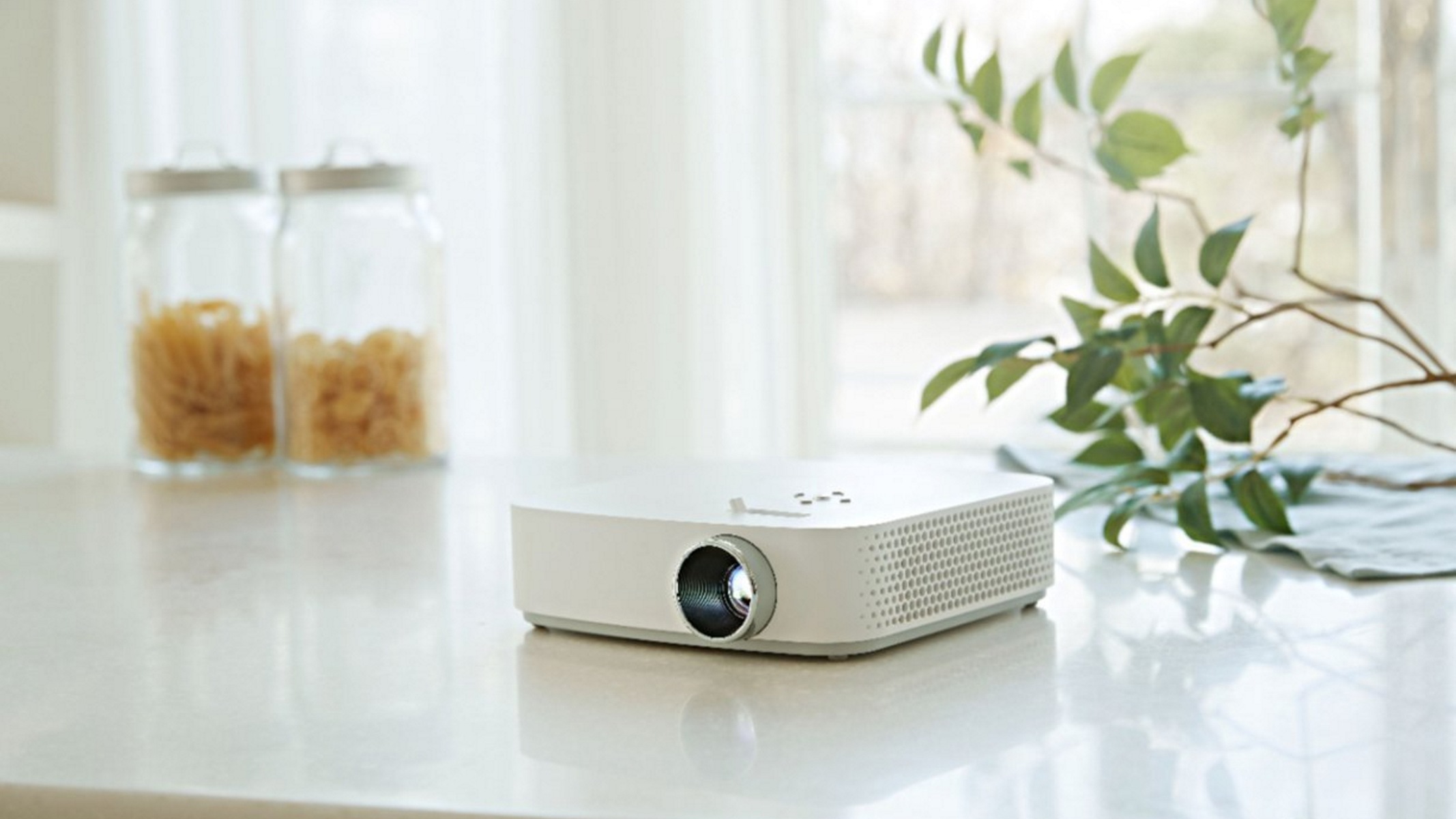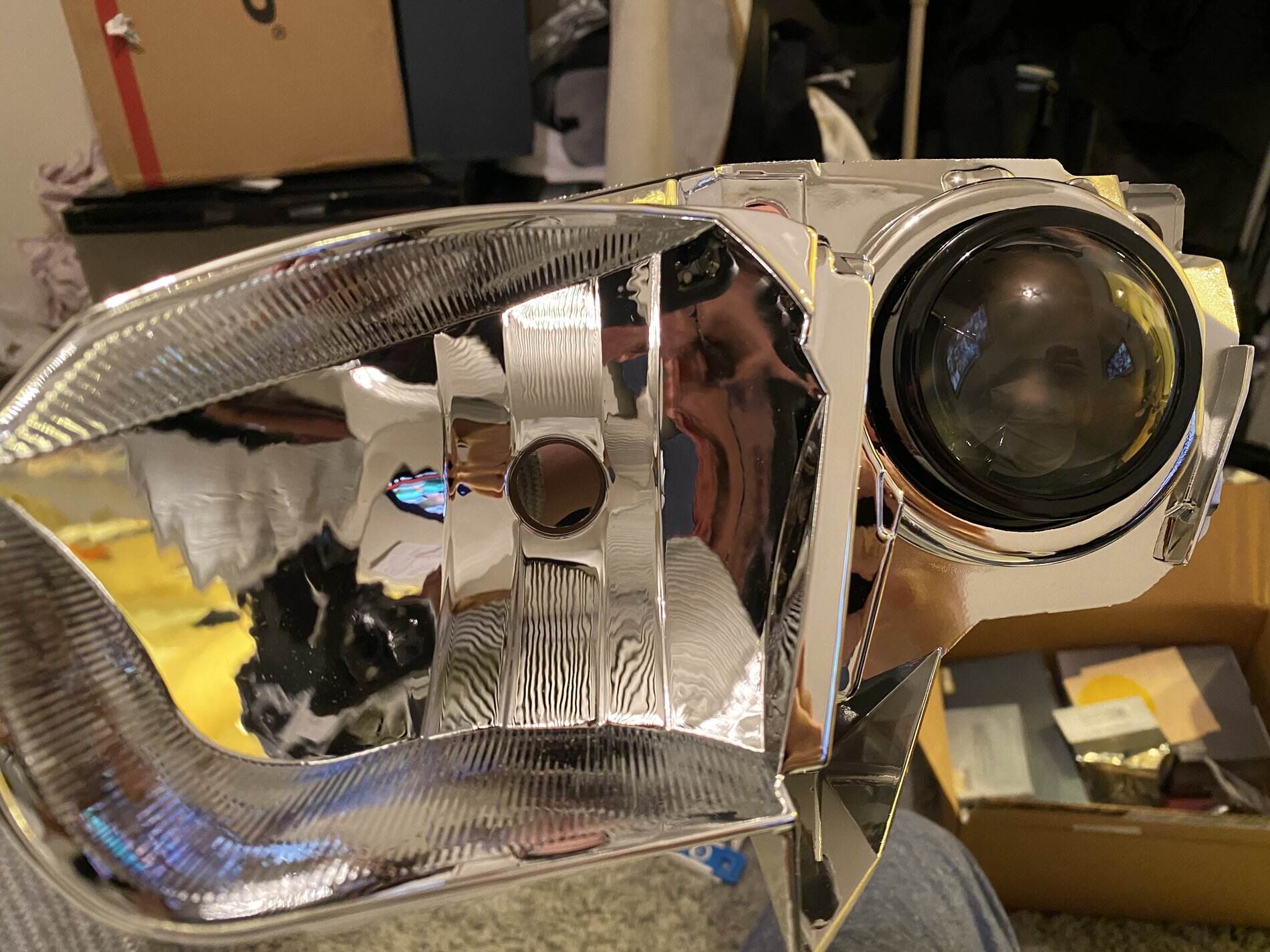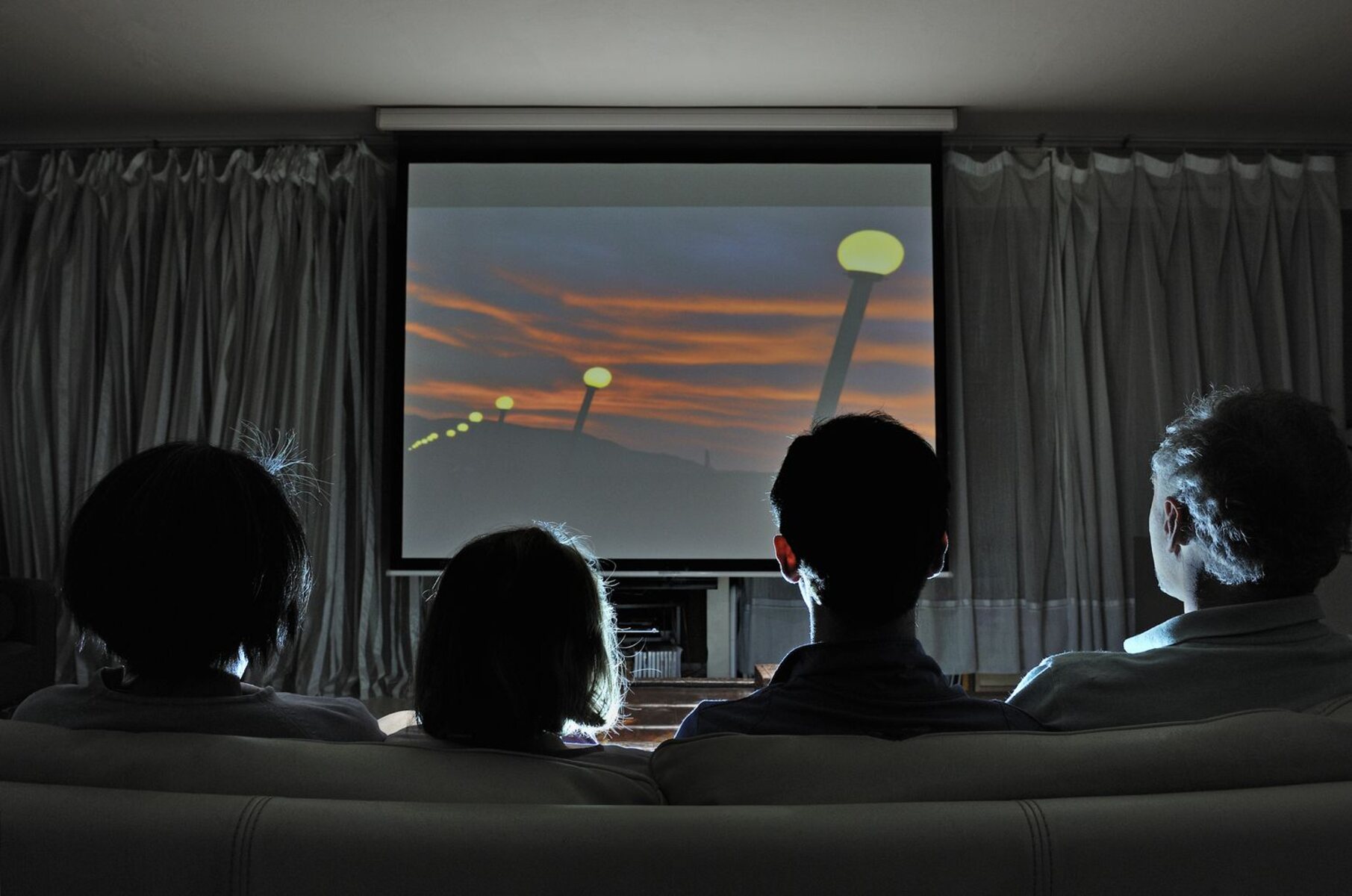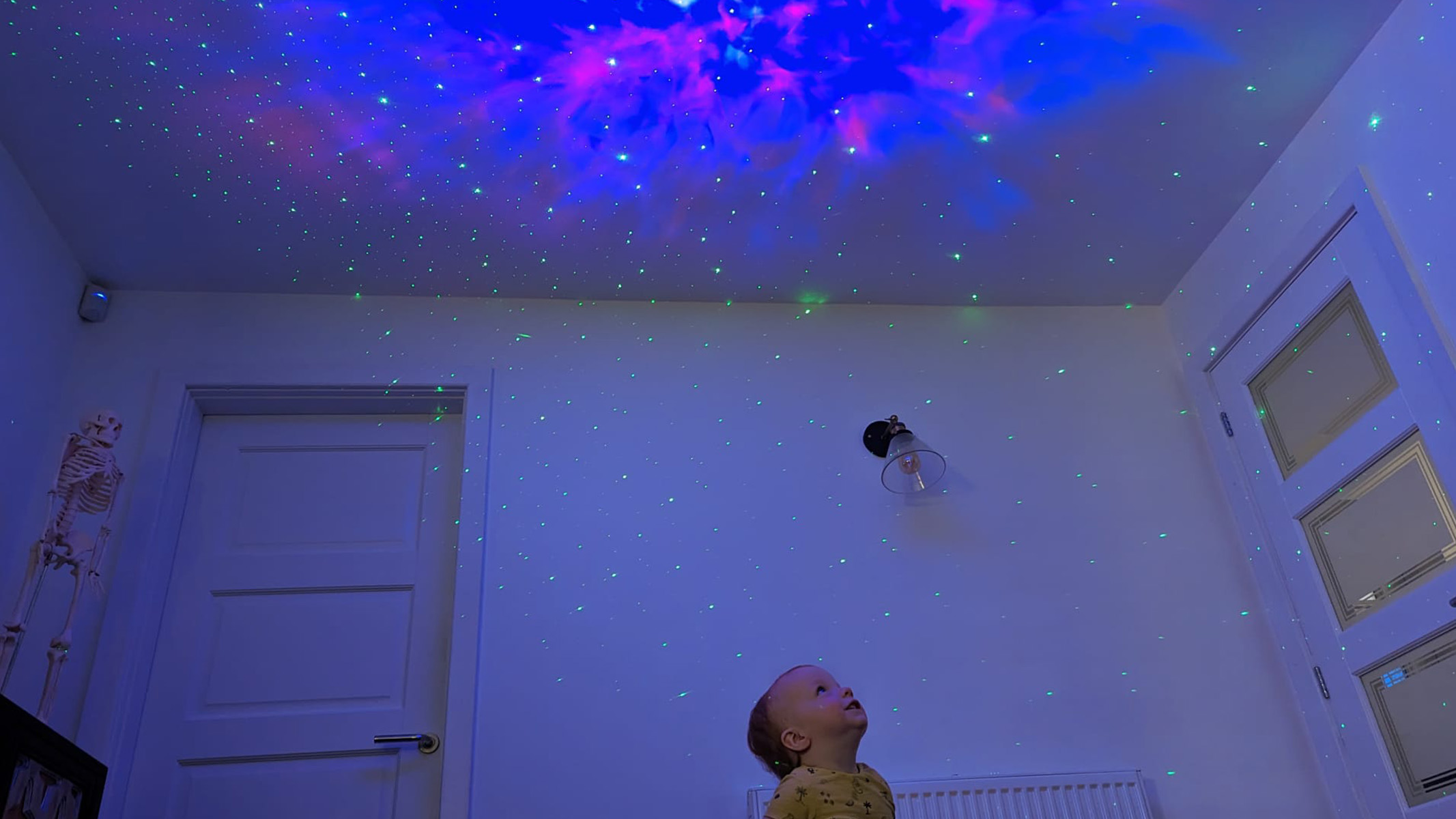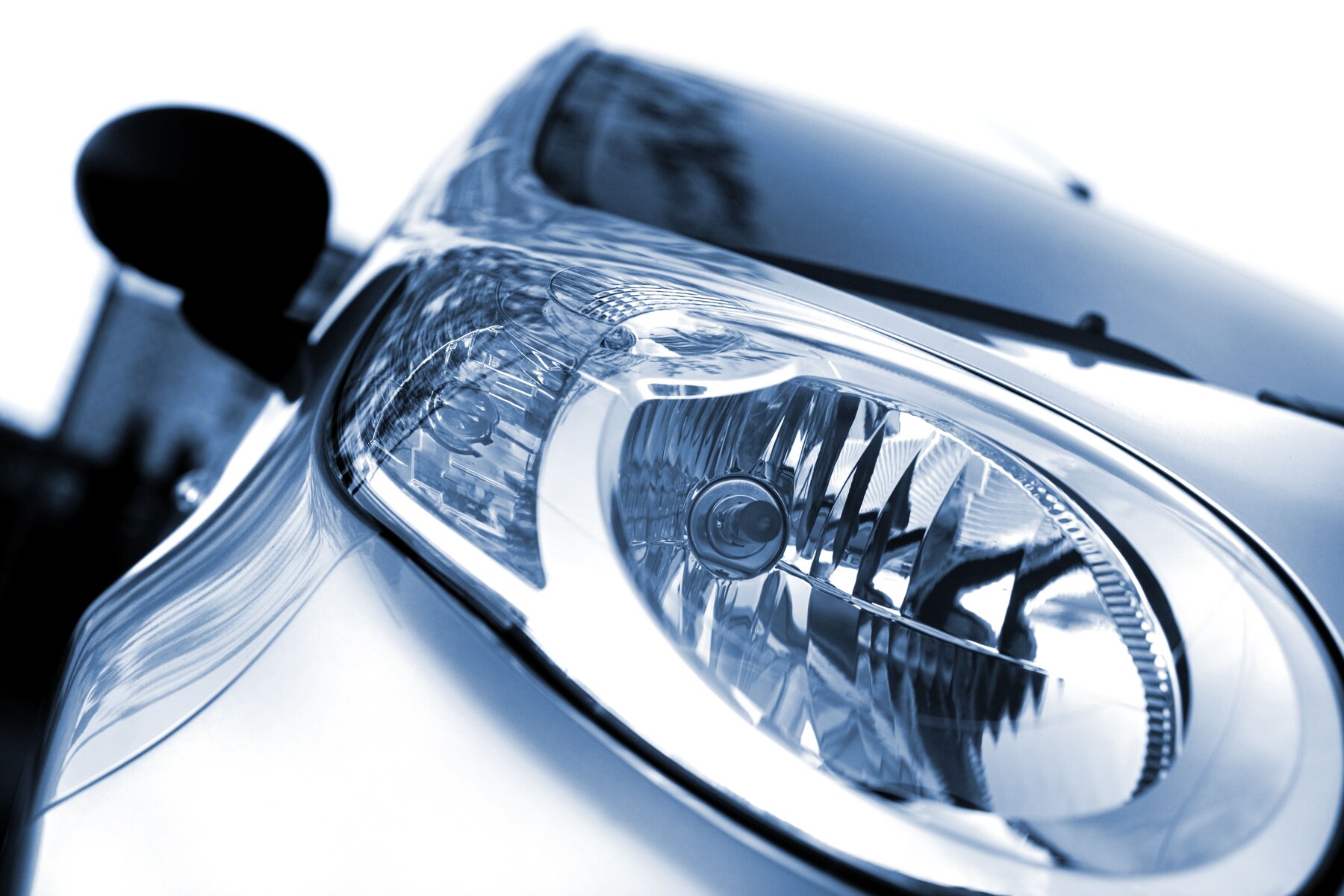Introduction
Welcome to the world of LED projectors, where big-screen entertainment and professional presentations are made easy and accessible. Whether you’re a movie buff looking to create a cinematic experience at home or a business professional needing a portable solution for delivering impactful presentations, an LED projector is the answer.
An LED projector is a versatile device that uses light-emitting diodes (LEDs) to project images or videos onto a larger surface, such as a screen or wall. It offers a compact and convenient alternative to traditional projectors, with numerous benefits and features that make it a popular choice among users.
In this article, we will explore the world of LED projectors and provide you with valuable insights on how to make the most out of these cutting-edge devices. We will discuss the various types of LED projectors available, the advantages they offer, and important factors to consider when choosing the right one for your needs. Additionally, we will guide you through the process of setting up an LED projector, connecting devices to it, and optimizing its performance.
Whether you’re a tech enthusiast, a homeowner, or a professional seeking a better way to present your ideas, this guide will equip you with the knowledge and skills necessary to harness the power of LED projectors and elevate your media and presentation experiences.
What is an LED Projector?
An LED projector is a device that uses light-emitting diodes (LEDs) as a light source to project images or videos onto a larger surface. It works by passing light through a small LCD or DLP chip and projecting the resulting image onto a screen or wall.
The use of LEDs as the light source has revolutionized the projector industry. Unlike traditional projectors that rely on lamps, LED projectors offer several advantages. LED bulbs are more energy-efficient, have a longer lifespan, and produce brighter and more vibrant colors. They also generate less heat, making them suitable for prolonged use without the risk of overheating.
LED projectors come in various sizes, from compact handheld models to full-sized units suitable for large events or home theaters. They are available in different resolutions, ranging from standard definition (SD) to high definition (HD) and even 4K. Additionally, many LED projectors feature built-in speakers and offer connectivity options such as HDMI, USB, and wireless capabilities, allowing you to connect a variety of devices and media sources.
With their portability and versatility, LED projectors have become popular for both entertainment and professional use. They can transform any room or space into a cinema-like experience, bringing movies, sporting events, and gaming to life on a larger scale. LED projectors are also widely used in business settings, enabling professionals to deliver impactful presentations, conduct training sessions, and collaborate on projects with ease.
Overall, LED projectors offer a convenient and immersive way to enjoy media content and enhance presentations. Whether you’re a movie enthusiast, a gamer, or a business professional, an LED projector can add a new level of excitement and functionality to your entertainment and work experiences.
Benefits of Using an LED Projector
LED projectors offer a multitude of benefits that make them a popular choice for both personal and professional use. Below are some of the key advantages of using an LED projector:
- Improved Color Accuracy: LED projectors produce vibrant and accurate colors, providing a more immersive viewing experience. The LED light source offers a wider color gamut and better color saturation compared to traditional projectors, ensuring that your movies, photos, or presentations are displayed with stunning clarity.
- Energy Efficiency: LED projectors are more energy-efficient than their lamp-based counterparts. LED bulbs consume less power, resulting in lower energy bills and a smaller carbon footprint. Additionally, LED projectors have a longer lifespan, reducing the need for frequent bulb replacements.
- Compact and Portable: LED projectors are often lightweight and compact, making them highly portable. Whether you’re traveling for business or pleasure, you can easily take your projector with you and set up a projection wherever you go. This portability enables outdoor movie nights, impromptu presentations, and gaming sessions on the go.
- Instant On/Off: Unlike lamps that require time to warm up or cool down, LED projectors have instant on/off capabilities. With a simple press of a button, you can start or end your projection immediately, saving you time and eliminating the need to wait for the projector to warm up or cool down.
- Quiet Operation: LED projectors generate less noise compared to traditional lamp-based projectors. The absence of cooling fans or moving parts results in quiet operation, allowing you to fully immerse yourself in the audio and enjoy a distraction-free viewing experience.
- Wide Connectivity Options: LED projectors typically offer a range of connectivity options, including HDMI, USB, VGA, and wireless capabilities. This allows you to connect various devices such as laptops, smartphones, gaming consoles, and media players. With multiple connection options, you can effortlessly access and project content from different sources.
- Cost-Effective: While LED projectors may have a higher upfront cost compared to lamp-based projectors, their long-term cost-effectiveness cannot be ignored. With energy savings, extended bulb lifespan, and reduced maintenance costs, LED projectors generally offer better value for money in the long run.
Overall, LED projectors provide exceptional image quality, energy efficiency, portability, and convenience. Whether you’re using them for entertainment purposes or professional presentations, LED projectors offer a wide range of benefits that enhance your viewing experience and make visual content more engaging and enjoyable.
Types of LED Projectors
LED projectors come in various types, each designed to cater to specific needs and preferences. Understanding the different types can help you choose the right projector that meets your requirements. Below are some common types of LED projectors:
- Pico Projectors: Pico projectors, also known as pocket projectors, are small-sized and highly portable projectors. They are designed to fit in your pocket or bag, making them ideal for on-the-go use. Pico projectors are great for personal use, such as sharing photos or videos with friends or watching movies in a small group.
- Mini Projectors: Mini projectors are slightly bigger than pico projectors and offer enhanced brightness and image quality. They are portable enough to be carried around easily and are suitable for casual home use or small business presentations.
- Home Theater Projectors: Home theater projectors are larger, high-definition projectors specifically designed for creating a cinematic experience at home. They offer excellent image quality, brightness, and contrast ratio, making them perfect for movie nights, gaming, and sports viewing. Home theater projectors often come with built-in speakers and support for 3D content.
- Business Projectors: Business projectors are designed for professional use in meeting rooms, conference halls, and classrooms. They have high brightness levels, connectivity options, and advanced features like keystone correction and wireless capabilities. Business projectors are optimized for delivering clear and crisp presentations, displaying graphs and data, and facilitating collaboration.
- Short-Throw and Ultra-Short-Throw Projectors: Short-throw and ultra-short-throw projectors are specially designed for confined spaces. They can project a large image even when placed close to the screen or wall, eliminating the need for extensive room setup. These projectors are perfect for small rooms, offices, and classrooms where space is limited.
- Interactive Projectors: Interactive projectors combine projection technology with touch or pen-based interactivity. They allow users to interact directly with the projected image, enabling collaborative brainstorming, interactive presentations, and engaging educational sessions. Interactive projectors are widely used in classrooms, boardrooms, and interactive exhibitions.
Before selecting an LED projector, consider your specific needs, space limitations, and usage requirements. Each type of projector offers unique features and capabilities, so it’s essential to choose one that best suits your intended application.
Factors to Consider When Choosing an LED Projector
Choosing the right LED projector requires careful consideration of various factors to ensure that it meets your specific needs and provides optimal performance. Below are some key factors to consider when selecting an LED projector:
- Resolution: The resolution of the projector determines the level of detail in the projected image. Common resolutions include 720p (HD), 1080p (Full HD), and 4K. Choose a resolution that matches your content and desired image quality.
- Brightness: The brightness of the projector is measured in lumens. Consider the ambient lighting conditions of the room where the projector will be used. A higher lumen count is recommended for brighter environments.
- Contrast Ratio: The contrast ratio determines the difference between the darkest and brightest parts of the image. Higher contrast ratios result in more vivid and lifelike images. Look for projectors with a high contrast ratio for better image quality.
- Throw Distance: The throw distance refers to the distance between the projector and the screen or wall. Consider the available space and the desired screen size to ensure the projector’s throw distance fits your needs.
- Connectivity Options: Check the available connectivity options of the projector. HDMI, USB, VGA, and wireless connectivity are common features that allow you to connect various devices such as laptops, gaming consoles, and media players.
- Keystone Correction: Keystone correction helps adjust the image shape and alignment if the projector is not placed perpendicular to the screen. Look for projectors with vertical and horizontal keystone correction to ensure a properly shaped image.
- Sound Quality: If you plan to use the projector’s built-in speakers, consider the sound quality. External speakers or audio output options may be necessary for better audio performance.
- Portability: If you need a projector that can be easily carried and set up in different locations, consider the size, weight, and portability features of the projector.
- Brand and Customer Reviews: Research different brands and read customer reviews to gauge the projector’s reliability, performance, and customer satisfaction. Choose a reputable brand with positive reviews.
- Price: Set a budget for the projector and consider the features and specifications that are essential for your needs. Compare prices and look for projectors that offer good value for money.
By considering these factors, you can narrow down your options and select an LED projector that best aligns with your requirements, ensuring a satisfying and immersive projection experience.
Setting Up an LED Projector
Setting up an LED projector is a straightforward process that can be done by following a few simple steps. Here’s a guide to help you get started:
- Choose the Projection Surface: Decide on the surface where you will project the image. It can be a blank wall, a dedicated projection screen, or even a white sheet.
- Position the Projector: Place the projector at the desired location, ensuring that it is level and stable. Consider the throw distance and adjust the position accordingly.
- Connect Power: Plug the power cord into the projector and connect it to a power source. Ensure that the power outlet is easily accessible and can handle the projector’s power requirements.
- Connect Video Source: Connect your video source, such as a laptop, DVD player, or game console, to the projector using the appropriate cable. HDMI is commonly used for high-definition content.
- Adjust Focus and Keystone: Use the focus ring on the projector lens to adjust the sharpness of the image. If the projected image appears distorted, use the keystone correction feature to align it properly.
- Adjust Image Size: Move the projector or adjust the zoom function, if available, to achieve the desired image size on the projection surface. Refer to the projector’s manual for specific instructions.
- Configure Audio: If the projector has built-in speakers, ensure that the audio is working correctly. Alternatively, connect external speakers for better audio quality, if needed.
- Test and Fine-Tune: Test the projected image and make any necessary adjustments to the focus, positioning, and image size. Take the time to fine-tune the settings to achieve the best possible picture quality.
- Secure the Cables: Bundle and secure the cables to avoid tripping hazards and to keep the setup tidy. Use cable ties or cable management solutions to organize the cables.
It’s important to consult the user manual or manufacturer’s instructions specific to your projector model for detailed guidance. Following these steps will help you set up your LED projector correctly and efficiently, ensuring an enjoyable viewing experience.
Connecting Devices to an LED Projector
Connecting devices to an LED projector is an essential step to enjoy your preferred content on the big screen. The process is simple and can be accomplished in a few straightforward steps:
- Identify the Connection Options: Check the available input ports on the projector. Common options include HDMI, VGA, USB, and audio ports.
- Gather the Necessary Cables: Depending on the devices you want to connect, gather the appropriate cables. HDMI cables are commonly used for high-definition video and audio transmission, while VGA cables are suitable for older computers and projectors.
- Connect Your Device to the Projector: Use the appropriate cable to connect your device to the projector. Insert one end of the cable into the corresponding port on your device (e.g., HDMI or VGA port), and plug the other end into the matching port on the projector.
- Choose the Correct Input Source: On the projector, select the input source that matches the port you used to connect your device. This ensures that the projector receives the signal from your device.
- Adjust Display Settings on Your Device (if needed): Depending on your device, you may need to adjust the display settings to mirror or extend the screen to the projector. Go to the display settings on your device and select the appropriate option.
- Play Content on Your Device: Once the connection is established, play the content on your device. The projector will project the content onto the screen or desired surface.
- Additional Audio Connection: If your projector does not have built-in speakers or you prefer better audio quality, you can connect external speakers to your device or projector using the audio output or auxiliary ports.
- Wireless Connection (if supported): Some projectors support wireless connectivity, allowing you to connect your devices without the need for cables. Follow the manufacturer’s instructions to set up a wireless connection if this feature is available.
Remember to consult the user manual or manufacturer’s instructions specific to your projector model for any additional guidance or specific details on connecting devices. With these simple steps, you’ll have all your favorite devices connected and ready to enjoy an immersive projection experience.
Adjusting the Image and Focus
Adjusting the image and focus of your LED projector is crucial to ensure a clear and sharp projection. Here are the steps to follow:
- Position the Projector: First, position your projector at the desired distance and angle from the projection surface. Make sure it is level and stable.
- Use Keystone Correction: If the projected image appears distorted due to the projector’s angle, utilize the keystone correction feature. Most projectors offer vertical and horizontal keystone adjustments to correct any misaligned or skewed image.
- Adjust the Zoom (if available): If your projector has a zoom function, adjust it to achieve the desired image size. Zooming in reduces the screen size, while zooming out expands the image.
- Focus the Image: Locate the focus ring on the projector lens. Begin by projecting a test image and slowly rotate the focus ring until the image appears sharp and clear. Take your time to achieve the best focus point.
- Fine-Tune the Image Position: If needed, make minor adjustments to the projector’s position or zoom to ensure the entire image is projected within the desired area on the screen or wall.
- Consider Screen Alignment: If you are projecting onto a screen, ensure the screen is properly aligned and taut. Any wrinkles or misalignment may affect the projected image quality.
- Avoid Obstructions: Ensure there are no obstacles between the projector and the projection surface that could block or interfere with the projected image. Clear any objects that may obstruct the path of the projected light.
- Test and Make Final Adjustments: Project a test image or content and assess the quality, color accuracy, and sharpness of the projection. Make any necessary adjustments to the focus, keystone, or zoom to achieve the desired image quality.
It’s important to consult the user manual specific to your projector model as different models might have unique adjustment features and instructions. By following these steps and taking the time to fine-tune the image, you can ensure a crisp and well-aligned projection for an immersive viewing experience.
Tips for Optimizing the Performance of an LED Projector
To get the best possible performance out of your LED projector and enhance your viewing experience, consider the following tips:
- Optimal Viewing Environment: Use the projector in a dark or low-light environment for the best image quality. Minimize ambient light sources that can wash out the projected image.
- Regularly Clean the Projector: Dust and debris can affect image quality. Clean the lens and vents of your projector regularly to ensure optimal performance. Use a soft cloth or lens cleaning solution recommended by the manufacturer.
- Prevent Overheating: Ensure proper ventilation and airflow around the projector to prevent overheating. Avoid covering or obstructing the vents and keep the projector in an area with adequate air circulation.
- Update Firmware and Software: Check for firmware or software updates for your projector model. These updates often include bug fixes, performance improvements, and new features that can enhance the projector’s overall performance.
- Manage Image Size and Resolution: Consider the image size and resolution that best suits your specific needs and content. Higher resolutions may require more processing power, so adjust the settings accordingly.
- Proper Maintenance: Follow the manufacturer’s recommended maintenance guidelines. This may include cleaning or replacing filters, checking lamp life, and conducting routine inspections to ensure optimal performance and longevity of your projector.
- Use High-Quality Video Cables: Invest in high-quality video cables and connectors to ensure a stable and reliable connection between your devices and the projector. Poor-quality cables can result in signal loss or degradation.
- Calibrate Colors and Image Settings: Explore the projector’s image settings and calibration features to adjust the color, brightness, contrast, and other visual aspects. This enables you to achieve more accurate and vibrant image reproduction.
- Audio Enhancements: Consider connecting external speakers or sound systems to enhance the audio quality of your projector. This is especially beneficial for home theaters or presentation settings where immersive sound is desired.
- Proper Power Management: When not in use, turn off the projector or activate power-saving modes to conserve energy and prolong the lifespan of the LED bulb. Unplug the projector when not in use for an extended period.
By following these tips, you can optimize the performance of your LED projector and elevate your viewing experience to new heights. Experiment with different settings and configurations to find the perfect balance that suits your preferences and content.
Troubleshooting Common Issues with LED Projectors
LED projectors are reliable devices, but occasionally, you may encounter common issues that can affect their performance. Here are some troubleshooting tips to help you address these issues:
- No Power: If the projector isn’t turning on, ensure that it is properly connected to a power source. Check the power cable and try plugging it into a different outlet. If the issue persists, check if the projector has a reset button and try performing a reset.
- No Image or Blank Screen: Verify that the input source is selected correctly on the projector. Check the HDMI or other video cables to ensure they are securely connected. Try connecting a different device or source to see if the issue lies with the original device.
- Poor Image Quality: If the projected image appears blurry or distorted, adjust the focus ring to sharpen the image. Check the projector’s keystone correction feature to align the image properly. Ensure that the projection surface is flat and smooth.
- No Sound or Inadequate Volume: If there is no sound or the volume is too low, check the audio connection and ensure it is securely plugged into the projector or external speakers. Adjust the volume settings on both the projector and your connected device.
- Overheating: If the projector overheats, ensure that it is properly ventilated and has adequate airflow. Clean any dust or debris from the projector’s vents. If the issue persists, refer to the manufacturer’s guidelines or contact their support for further assistance.
- Color Issues: If the colors appear inaccurate or washed out, check the color settings on your projector and adjust them as needed. Consider calibrating the colors or using presets to restore accurate color reproduction.
- Remote Control Malfunction: Replace or recharge the batteries in the remote control if it’s not functioning properly. Ensure that there are no obstructions between the remote and the projector’s receiver. If needed, try resetting the remote control or pair it with the projector again.
- Unresponsive Buttons or Controls: If the projector buttons or controls are unresponsive, check if the projector is locked or if the control panel is disabled in the settings. Try resetting the projector or referring to the user manual for specific instructions.
- Software or Firmware Issues: If you encounter software or firmware issues, check if there are any available updates for your projector model. Visit the manufacturer’s website or contact their support to download and install the latest software or firmware.
- Unusual Noise: If the projector produces unexpected noises, check for any loose parts, such as a loose lens or cover. Ensure that the projector is placed on a stable surface. If the issue persists, consult the manufacturer’s support or seek professional assistance.
If you are unable to resolve an issue with your LED projector, refer to the user manual or contact the manufacturer’s support for specific troubleshooting guidance. They can provide further assistance based on your projector model and the nature of the issue.
Conclusion
LED projectors have revolutionized the way we enjoy multimedia content and deliver presentations. With their compact size, vibrant colors, energy efficiency, and portability, LED projectors have become popular solutions for both personal and professional use.
In this article, we explored the world of LED projectors and highlighted their numerous benefits. We discussed the various types of LED projectors available, including pico projectors, home theater projectors, and business projectors, among others. Each type caters to specific needs and preferences, ensuring there’s a perfect option for every user.
We also examined the essential factors to consider when choosing an LED projector, such as resolution, brightness, and connectivity options. These factors help you make an informed decision and select a projector that best suits your requirements.
Setting up an LED projector was discussed, emphasizing the importance of positioning, connecting power and devices, adjusting focus and keystone settings, and testing the image. These steps ensure a seamless and satisfying projection experience.
Furthermore, we provided tips for optimizing the performance of LED projectors, including environmental considerations, regular maintenance, calibration, and power management. Implementing these tips enhances overall image quality and user experience.
In the event of any issues, we shared troubleshooting tips to address common problems such as power, image quality, sound, and connectivity. These steps help you quickly troubleshoot and resolve any issues you may encounter with your LED projector.
Now armed with the knowledge and skills to make the most out of your LED projector, you can create memorable entertainment experiences, deliver impactful presentations, and enjoy high-quality multimedia content. Whether for personal or professional use, LED projectors offer a versatile and immersive way to amplify your visual experiences.
So go ahead and embrace the world of LED projectors, and unlock the potential for larger-than-life entertainment and dynamic presentations that captivate your audience.







